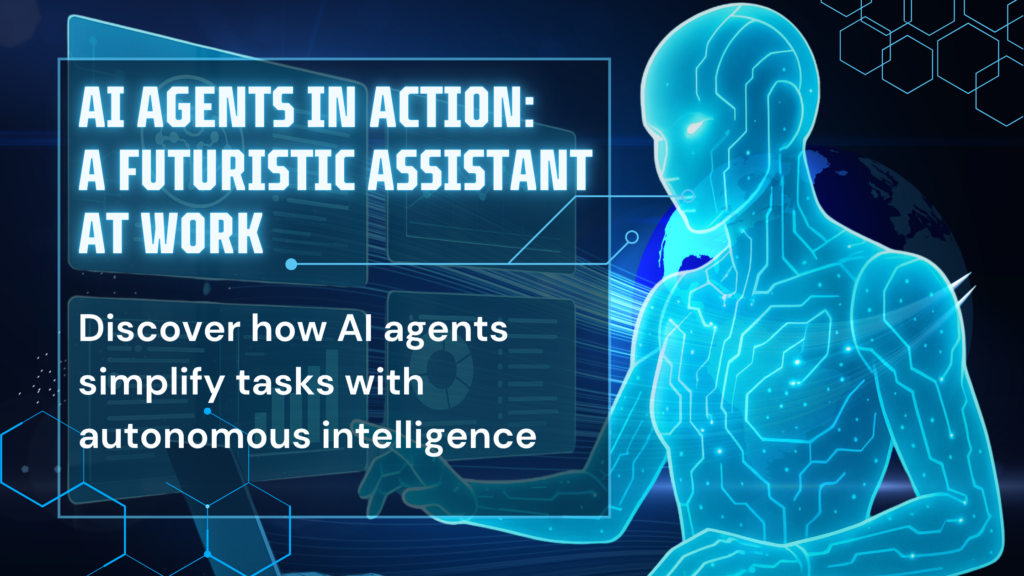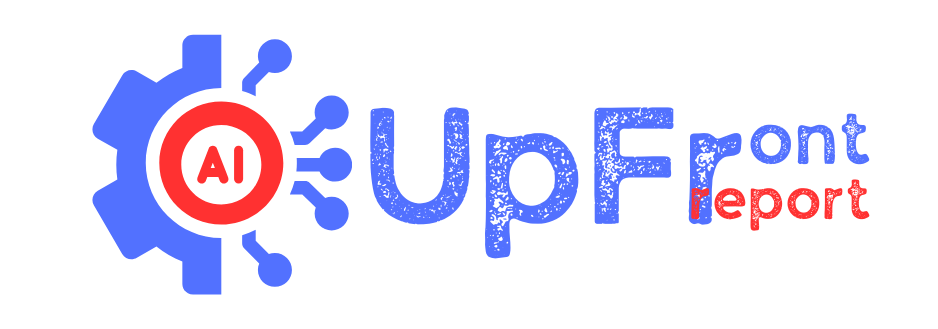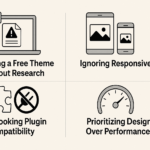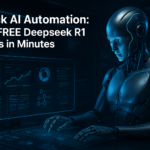Before diving into the world of AI agents, let me summarize what you’ll learn: AI agents are autonomous software systems that can perform specific tasks without constant human input. Unlike basic AI tools, they can make decisions, learn from interactions, and work independently toward defined goals. This guide will walk you through the fundamentals of AI agents, their types, real-world applications, and how you can get started with them—even as a complete beginner.

What Are AI Agents and Why Should You Care?
Have you ever wished for a digital assistant that could actually think ahead and solve problems without you spelling out every single step? That’s essentially what AI agents do. Unlike regular chatbots or simple AI tools that just respond to commands, AI agents can take initiative and work toward goals on their own.
AI agents are autonomous software tools designed to perform tasks, make decisions, and interact with their environment intelligently and rationally. Think of them as specialized digital workers that stay focused on their assigned jobs without getting distracted or wandering off-task.
Why does this matter to you? Well, we’re entering an era where working with AI isn’t just for tech experts anymore. According to recent statistics, 51% of consumers now prefer bots over human agents for immediate service, and 68% believe these digital helpers should match skilled human expertise. The ability to use AI agents effectively is quickly becoming as essential as knowing how to use a smartphone.
What Makes AI Agents Different from Other AI Tools?
You might be wondering: “I’ve used ChatGPT before—isn’t that an AI agent?” Not quite. While both use artificial intelligence, there’s a key difference that makes agents special.
AI agents stand out because of their autonomy. Unlike traditional AI models that need constant human guidance, agents can initiate actions and make decisions based on predefined goals. They don’t just wait for your next command—they actively work toward solving a problem.
Here’s what makes them unique:
- They focus on specific assigned goals (like writing emails or scheduling meetings)
- They can execute relevant actions to achieve those goals
- They stay strictly within their defined purpose
- They make informed decisions based on their programming and learning
- They understand and process natural language instructions
The Building Blocks of AI Agents
At their core, AI agents combine several technologies to create something greater than the sum of its parts.
The Tech Behind the Magic
Most AI agents are powered by large language models (LLMs), similar to those behind tools like ChatGPT. But what makes agents truly powerful is how they extend beyond basic LLMs by:
- Using tool calling to obtain up-to-date information
- Optimizing workflows automatically
- Creating subtasks autonomously
- Storing past interactions in memory
- Planning future actions for more personalized experiences
This architecture allows them to not just understand what you say but to take meaningful action in response.
Key Components That Make AI Agents Work
Every AI agent, from the simplest to the most complex, typically includes these three essential components:
- Architecture and algorithms: The underlying systems that process data and support decision-making
- Workflow and processes: How the agent plans actions, executes steps, and learns from feedback
- Autonomous actions: The ability to perform tasks without human intervention
Think of these components as the brain, nervous system, and limbs of the agent—all working together to accomplish tasks.

Types of AI Agents You Should Know About
Not all AI agents are created equal. Depending on their design and purpose, they can vary significantly in complexity and capability.
Simple vs. Complex Agents
At the most basic level, we can categorize AI agents by their complexity:
Simple reflex agents act based solely on the current state of their environment using predefined rules—like a thermostat that turns on when the temperature drops.
Model-based reflex agents maintain an internal model of how the world works, allowing them to make more sophisticated decisions2.
But this is just the beginning. As we move up in complexity, we find agents that can plan multiple steps ahead, learn from experience, and even collaborate with other agents.
Functional Categories of AI Agents
In practical terms, AI agents are often categorized by their specific functions:
- Front-Line Agents: Handle high-volume inquiries and can cut response times by 35%
- Resolution Agents: Provide end-to-end problem solving for more complex issues
- Proactive Support Agents: Predict and prevent issues before they occur
- Knowledge Retrieval Agents: Access and apply company knowledge instantly
Each type serves a specific purpose, and many businesses use multiple types to create a comprehensive AI strategy.
Real-World AI Agents in Action
AI agents aren’t just theoretical concepts—they’re already making a big impact across industries and in our daily lives.

Business Use Cases That Are Changing Industries
Customer Service: Alaska Airlines is developing natural language search powered by AI that functions like interacting with a knowledgeable travel agent, making booking more intuitive and personalized.
Security: Companies like Pfizer are using AI agents to aggregate cybersecurity data sources, cutting analysis times from days to seconds and strengthening their security posture.
Productivity: Uber has implemented AI agents to help employees be more productive, save time, and be even more effective at work, showing how agents can enhance human capabilities rather than replace them11.
Everyday Examples You Might Not Recognize as AI Agents
You might already be interacting with AI agents without realizing it:
- When you ask a smart speaker to order groceries and it handles the entire process
- When your email automatically categorizes messages and suggests replies
- When your banking app alerts you to unusual spending and suggests budget adjustments
These seemingly simple conveniences are actually powered by sophisticated AI agents working behind the scenes.
How to Get Started with AI Agents as a Complete Beginner
Don’t worry—you don’t need a computer science degree to start working with AI agents. Here’s a step-by-step approach anyone can follow.
Step 1: Define What You Want Your Agent to Do
Before diving into the technical aspects, get crystal clear on your agent’s purpose. Ask yourself:
- What specific problem will this AI agent solve?
- Who will use it, and how?
- What kind of information will it need to process?
- What decisions should it be able to make?
- How much independence should it have?
For example, if you’re building a simple agent to help organize your emails, its purpose might be to categorize messages, highlight important ones, and suggest reply templates.
Step 2: Choose Your Tools and Learning Resources
For beginners, starting with established frameworks makes the process much easier. Microsoft offers a comprehensive course on AI Agents for Beginners with 10 lessons covering the fundamentals.
Some beginner-friendly tools include:
- GitHub Models (free but limited)
- Azure AI Foundry (requires an Azure account)
- CrewAI (with numerous pre-built use cases)
Step 3: Start Small and Build Up
Don’t try to create a super-advanced agent right away. Instead, begin with a basic prototype that handles one specific task well. This allows you to test core functionality before adding complexity.
As one expert advises: “Consider the AI text as a first draft. Never copy-paste an AI text directly into your website. It needs a human touch first.” The same principle applies to building agents—start with a simple foundation, then refine and expand.
Step 4: Test, Learn, and Improve
The secret to successful AI agent development is continuous improvement. Observe how your agent performs, gather feedback, and make adjustments accordingly.
Remember that even the most sophisticated AI agents today started as simple prototypes that evolved over time.
Common Challenges and How to Overcome Them
Even with the most careful planning, you’ll likely encounter some obstacles when building or implementing AI agents.
Technical Hurdles for Beginners
The biggest challenge for most beginners is finding the right balance between ambition and feasibility. It’s easy to imagine an agent that can do everything, but building one that does even a single task well takes focused effort.
Start with well-defined, narrow tasks rather than trying to build the next Jarvis from Iron Man overnight. As you gain experience, you can gradually expand your agent’s capabilities.
Ethical Considerations You Can’t Ignore
AI agents raise important ethical questions that even beginners need to consider:
- Privacy: How will your agent handle sensitive information?
- Transparency: Will users know they’re interacting with an AI?
- Bias: How can you ensure your agent doesn’t perpetuate harmful stereotypes?
Addressing these concerns isn’t just about being responsible—it’s about building agents that people will actually trust and use.
Making Your AI Agents More Human-Like
One of the biggest challenges in creating effective AI agents is making them feel natural and relatable. Here are some proven strategies:
Add Personality Through Language and Tone
When crafting prompts or designing your agent’s responses, focus on creating a conversational tone:
- Use contractions (don’t, can’t, you’re) instead of formal language
- Avoid academic phrases like “furthermore,” “consequently,” and “it is imperative”
- Write at a level a 12-year-old could understand, with relatable examples
Incorporate Stories and Real-World Examples
Abstract concepts become much more engaging when wrapped in stories or illustrated with concrete examples. As one expert suggests: “Personalize the text with stories and emotions. If the AI writes: ‘there is not enough staff to do the work’ change it to ‘there’s no one to take your father for his daily walk’.”
This approach helps bridge the gap between technical functionality and human understanding.
The Future of AI Agents: Where We’re Headed
The field of AI agents is evolving rapidly, with new capabilities emerging almost daily. Looking ahead, we can expect:
- Greater autonomy: Future agents will handle increasingly complex tasks with minimal oversight
- More natural interactions: The line between human and AI communication will continue to blur
- Expanded capabilities: Agents will gain new abilities, from emotional intelligence to creative problem-solving
According to industry forecasts, 58% of customer experience leaders expect their chatbots to become more sophisticated by 2025, indicating growing confidence in AI agents to enhance customer interactions.
Getting Started Today: Your Next Steps
Now that you understand the basics of AI agents, here are some concrete steps to begin your journey:
- Explore Microsoft’s AI Agents for Beginners course for a structured learning path
- Experiment with simple agent frameworks to build basic functional agents
- Join communities of like-minded beginners sharing their experiences and solutions
- Start small but think big – consider how AI agents might solve problems in your life or work
Remember, every expert was once a beginner. The most important step is simply to start.
Conclusion: The Beginning of Your AI Agent Journey
AI agents represent one of the most exciting frontiers in technology today. They’re transforming how we work, communicate, and solve problems—and the barriers to entry have never been lower.
As a beginner, you now have the foundational knowledge to start exploring this field, whether you want to use existing agents to boost your productivity or build your own custom solutions. The journey into AI agents is ongoing, with new advancements happening regularly. By starting with the basics outlined in this guide, you’re taking the first step toward harnessing this transformative technology.
The future belongs to those who can effectively collaborate with AI—not just as passive users, but as partners guiding these powerful tools toward meaningful goals. And that future starts today, with your first steps into the world of AI agents.


